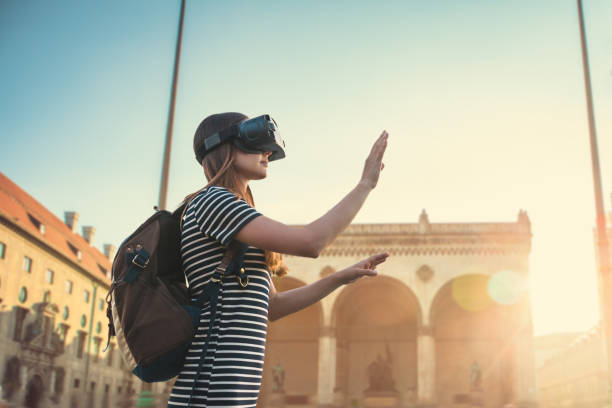"Redefining Real Estate: The Emergence of Virtual Reality Tours"
The real estate industry has always been about the tangible - brick and mortar, physical locations, and face-to-face interactions. However, with the advent of digital technology, a new trend is beginning to reshape the way we buy and sell properties: virtual reality (VR) tours.

A New Dimension in Real Estate
Virtual reality tours have been inching their way into the real estate landscape over the past few years, but recent circumstances have accelerated their adoption. This technology, once considered a luxury reserved for high-end listings, is now becoming a standard offering, transforming the way buyers, sellers, and investors interact with properties.
The Rise of Virtual Reality
Virtual reality in real estate could be traced back to the early 2010s with the advent of 360-degree photography. However, it wasn’t until the mid-2010s, when VR headsets became more affordable and accessible, that the technology truly started to gain traction in the industry. As VR technology continues to evolve, it is likely to become an even more integral part of the real estate market.
Current Market Dynamics
The pandemic has been a catalyst for the adoption of VR in real estate. With physical viewings and open houses becoming less viable, virtual tours have emerged as an essential tool for real estate professionals. According to a recent survey by the National Association of Realtors, 76% of buyers found virtual tours very useful during their property search.
The Advantages and Challenges of Virtual Reality Tours
Virtual tours offer numerous benefits for all involved parties. For buyers, they provide the convenience of viewing properties from anywhere, saving time, and reducing the need for travel. For sellers and agents, they attract a wider audience and enable more efficient sales processes.
However, they also present several challenges. High-quality virtual tours can be expensive and time-consuming to produce. Moreover, while VR can give a good sense of space and layout, it cannot replicate the feel of physically being in a property.
The Impact on Real Estate Stakeholders
The adoption of VR tours has significant implications for buyers, sellers, and investors. For buyers, it means a more flexible and efficient property search. For sellers and agents, it means adapting to new marketing strategies and investing in new technologies. Investors, on the other hand, can leverage VR to assess potential investments without the need for physical inspections.
The emergence of virtual reality tours in real estate is a fascinating development, reflecting the industry’s adaptability in the face of technological advancements and shifting market conditions. As VR technology continues to develop and its adoption becomes more widespread, it is likely to further redefine the way we buy, sell, and invest in real estate.




